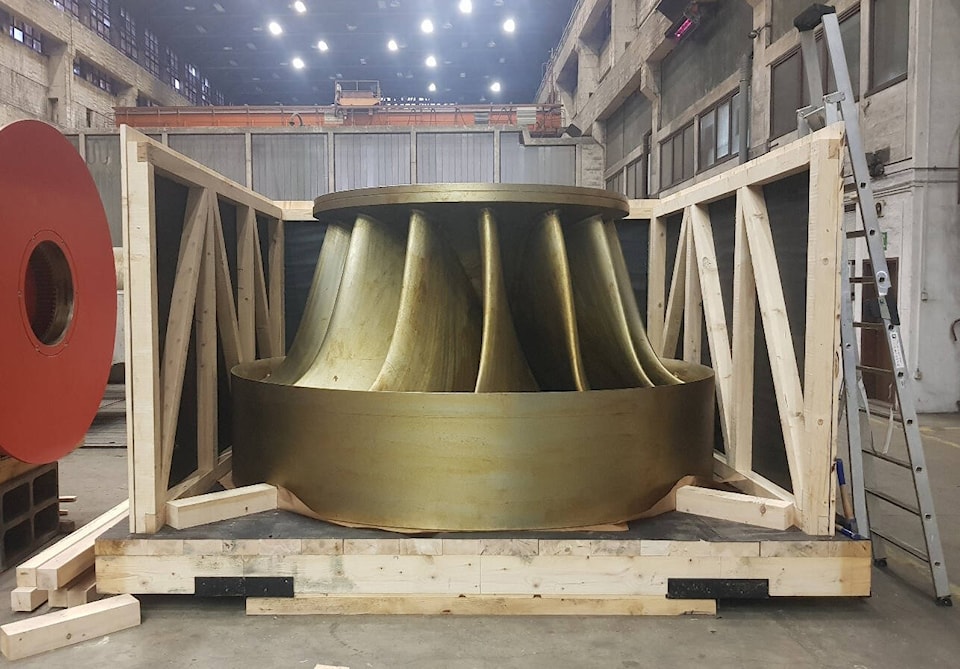An application to proceed with the Northwest Territories Power Corporation’s largest capital project in Northwest Territories Power Corporation’s history was submitted to the NWT Public Utilities Board last month.
The NTPC Turbine Overhaul Project, which is expected to cost an estimated $66.562 million, includes replacing the hydro plant’s 56-year-old turbine generator unit that provides South Slave its hydro-electricity.
The installation is to take place in the spring of 2023 over a six month period before it is operational the following winter.
Only the federal government has committed $18 million from its Investing in Canada Infrastructure Program toward the project to date after approving financial assistance in September 2019.
However, the corporation says it is currently working to seek other sources of funding.
Doug Prendergast, media spokesperson for NTPC, said the turbine has provided electricity reliability in the South Slave since the sixties but due to age and deteriorating condition must now see a major upgrade.
“Taltson Hydro has operated reliably for many years with little capital investment required to keep it running,” he explained. “This has helped keep power rates in the South Slave at the lowest level of all communities in NWT.”
“NTPC has been monitoring the condition of the Taltson turbine for many years and has monitored the degradation carefully,” he said.
Since before 2016, the corporation has been planning for the need to replace the turbine, now at the end of its life.
Options other than to replace the equipment have been provided to the public utilities board and include continuing with the aging equipment — otherwise known as the do-nothing approach — or using diesel to provide power to the South Slave.
According to Prendergast, however, neither of these alternatives are practical.
“Continuing to operate the unit without completing an overhaul risks a catastrophic failure that could lead to a lengthy hydro outage that would be very costly,” he said.
“Investing in refurbishment of Taltson hydro at a net cost to NTPC of approximately $50 million is the best, most affordable option for securing clean, renewable electricity.
“In the short term, diesel generation is the only other realistic alternative to a refurbished Taltson hydro. The annual cost of powering the South Slave with diesel would be more than $12 million, depending on fuel price assumptions.”
Replacing the turbine will also provide clean energy to new mining operations — namely the planned return of the Pine Point zinc mine — and help the GNWT achieve its climate change goals, he added.
Prendergast said that additional demand on the system could generate industry revenues to help offsets some of the overall costs.
“Electricity demand in the South Slave is currently lower than the amount that Taltson Hydro can generate by approximately five to seven megawatts (MW),” he said.
“NTPC has determined that the addition of four megawatts of new system load would offset the cost of the Taltson overhaul.
“The Pine Point mine is one of the potential customers that could increase system load in the South Slave. NTPC will continue to work with the GNWT to identify other potential industrial customers.”
The impact on ratepayers won’t be known until NTPC submits a review of rate impacts from the project to the public utilities board PUB in two to three years’ time.
The Town of Hay River has registered as an intervenor with the PUB to the NTPC’s application review process. In that role, parties can review the application and cross-examine the project proponents in application hearings.
“Right now (NTPC is) essentially just making the case to the PUB that the turbine overhaul is needed,” said Glenn Smith, senior administrative officer of the Town of Hay River during the Feb. 21 regular council meeting
“After that we will get a better handle when they do submit for a rate increase assumingly to understand what the impact would be to more fully understand it from a rate perspective.”
The municipality would not comment on its concerns with the project nor speculate on impacts to ratepayers, however stated this week that it has the role to protect consumers.
“The Town is intervening in the approval process as part of our due diligence to protect the interest of our residents as electrical power rate payers,” stated acting SAO Sam Mugford in a March 9 email.
“If the project is approved we will also intervene in any following regulator processes for rate change approval.”
Prendergast said that the review process for the project’s permit application will conclude on March 31, after which a Board decision will be made on the permit.
